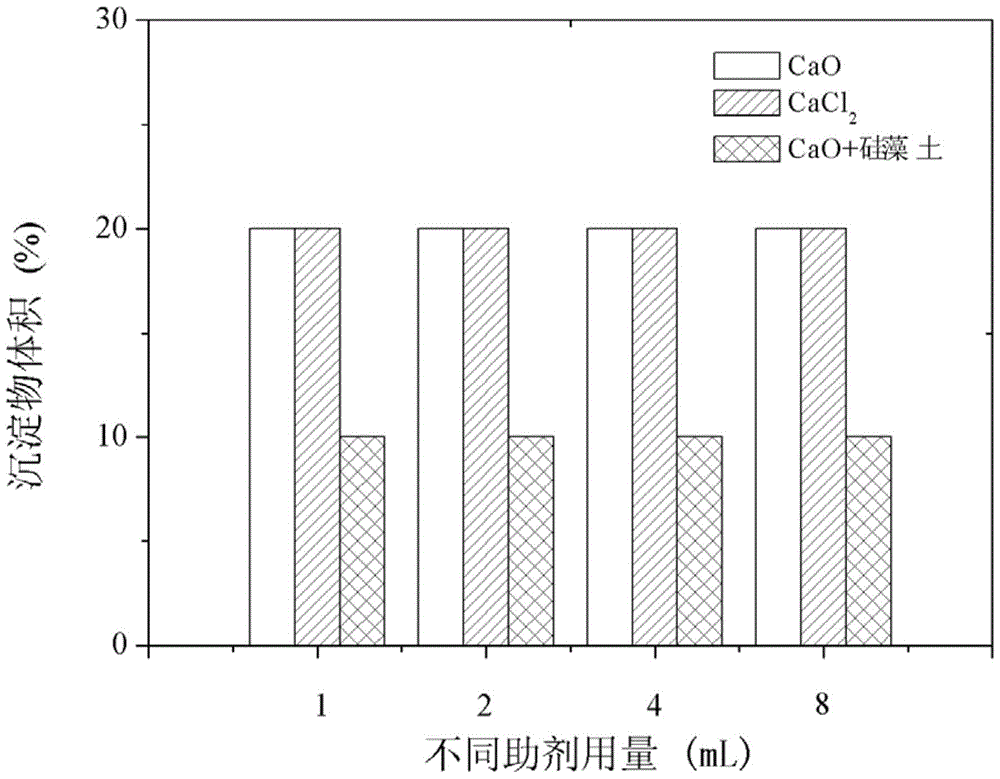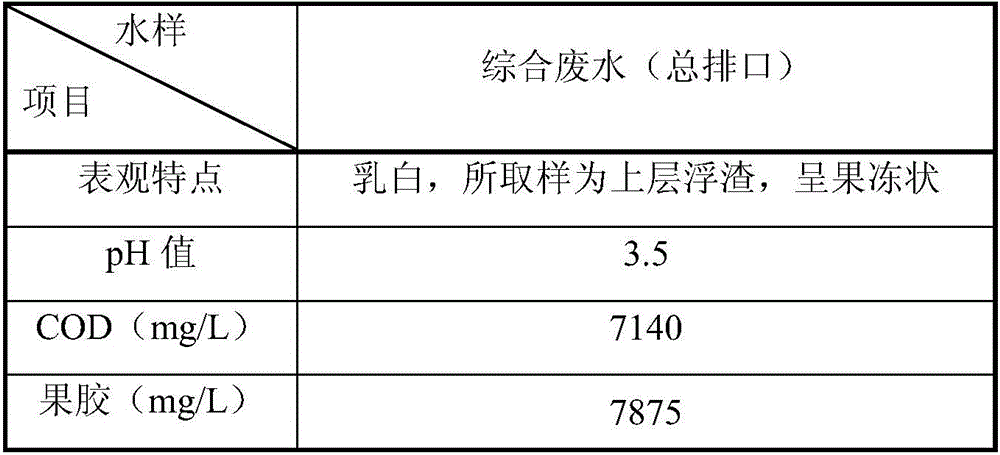Treatment method of citrus canned production wastewater
A treatment method and technology for producing waste water, which is applied in food industry waste water treatment, flocculation/sedimentation water/sewage treatment, etc. It can solve the problems affecting the treatment effect, high viscosity of pectin waste water, and poor treatment effect, so as to improve process safety and stability, to achieve recycling and resource utilization, and to achieve good wastewater treatment effects
- Summary
- Abstract
- Description
- Claims
- Application Information
AI Technical Summary
Problems solved by technology
Method used
Image
Examples
Embodiment 1
[0033] A method for treating wastewater from canned citrus production, comprising the following steps: extracting acid soaking water and alkali soaking water produced in the production process of canned oranges, mixing the acid soaking water and alkali soaking water at a ratio of 1:2 to form comprehensive wastewater, and measuring its pH=3.5. First, the comprehensive wastewater is filtered with multi-layer (usually 3-5 layers) gauze, that is, the water sample is pretreated, and then the composite flocculant is added to the filtered comprehensive wastewater, in order to compare the effect of different composite flocculants on the comprehensive wastewater treatment. Influenced, four groups of experiments were carried out (since it was only a qualitative experiment to observe the flocculation effect, so the operation of centrifugation was not adopted), each of the filtered water samples was taken 30mL, and the following flocculants were added to the four groups of water samples: ...
Embodiment 2
[0047] A method for treating waste water from canned citrus production of the present invention, comprising the following steps: extracting acid soaking water and alkali soaking water generated during the production of canned oranges, mixing the acid soaking water and alkali soaking water at a ratio of 1:2 to form comprehensive wastewater , so that the pH of the comprehensive wastewater = 3.5. First filter the comprehensive wastewater with three layers of gauze, then add a composite flocculant to the filtered comprehensive wastewater, stir at 30rpm for 10min, and then perform solid-liquid separation by centrifugation, the centrifugal speed is 4000rpm, and the centrifugation time is 10min. Finish processing.
[0048] In this example, the composite flocculant is specifically CPAM (1g / L) and Fe 2 (SO 4 ) 3 (2g / L).
[0049] In this example, 150mL of each of the 4 groups of filtered water samples were taken and added respectively:
[0050] A. 6mL Fe 2 (SO 4 ) 3 +4mLCPAM
...
Embodiment 3
[0060] A method for treating waste water from canned citrus production of the present invention, comprising the following steps: extracting acid soaking water and alkali soaking water generated during the production of canned oranges, mixing the acid soaking water and alkali soaking water at a ratio of 1:2 to form comprehensive wastewater , so that the pH of the comprehensive wastewater = 3.5. First filter the comprehensive wastewater with three layers of gauze, then add a composite flocculant to the filtered comprehensive wastewater, stir at 30rpm for 10min, and then perform solid-liquid separation by centrifugation, the centrifugal speed is 4000rpm, and the centrifugation time is 10min. Finish processing.
[0061] In this example, experiments were carried out with different composite flocculants, 13 groups of filtered water samples of 30 mL each were taken, and reagents were added according to the requirements in Table 4. Each reagent and its concentration were: CaCl 2 (5g / ...
PUM
 Login to View More
Login to View More Abstract
Description
Claims
Application Information
 Login to View More
Login to View More - R&D
- Intellectual Property
- Life Sciences
- Materials
- Tech Scout
- Unparalleled Data Quality
- Higher Quality Content
- 60% Fewer Hallucinations
Browse by: Latest US Patents, China's latest patents, Technical Efficacy Thesaurus, Application Domain, Technology Topic, Popular Technical Reports.
© 2025 PatSnap. All rights reserved.Legal|Privacy policy|Modern Slavery Act Transparency Statement|Sitemap|About US| Contact US: help@patsnap.com



